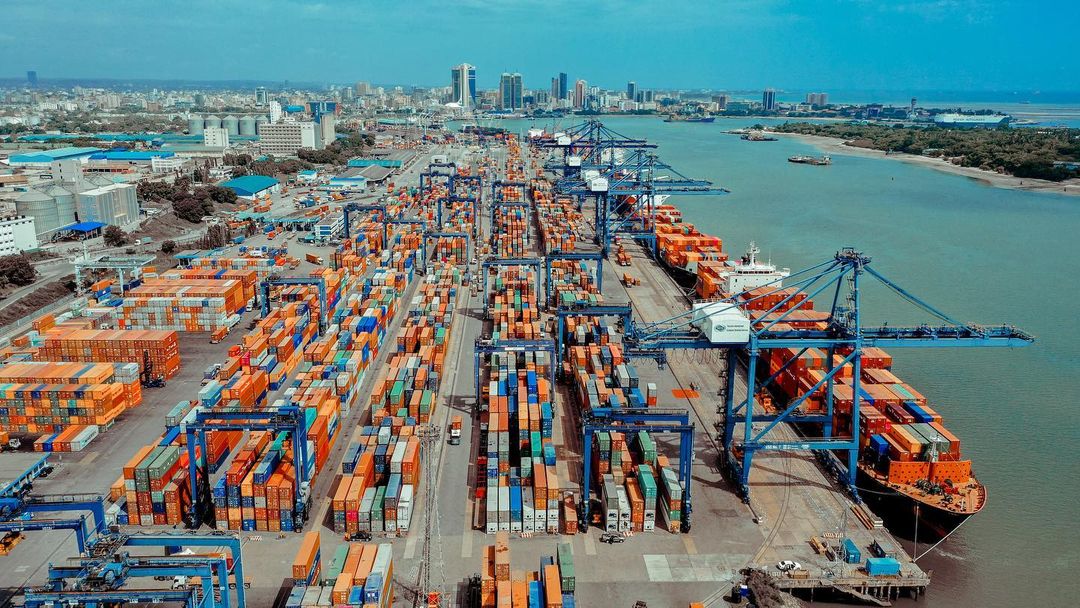Dar Port Upgrades Reprice East African Trade
Dar Port throughput up over 15% YoY as automation halves dwell time and lifts revenue; stable TZS=X near 2,600 per USD and oil prices (CL=F) near $80 sustain logistics margins while FDI above USD 1.6 bn signals durable trade-led growth momentum.

Cargo throughput at Tanzania’s Port of Dar es Salaam has accelerated following a cycle of digital and physical upgrades, confirming that the country’s principal maritime gateway is now converting infrastructure investment into sustained productivity gains. The port handles more than 90% of national trade and serves multiple landlocked neighbours. Preliminary data indicate double-digit growth in volumes as automation, optical scanning, electronic gate control, and integrated customs systems compress vessel turnaround and reduce average container dwell time to the mid-single-day range. The result is an efficiency shock that raises capacity utilisation without major new berths, signalling that Tanzania’s logistics transition is moving from build-out to optimization.
The mechanisms are tangible. Automation lifts crane productivity and reduces shift variability, digital queue management lowers trucking idle time, and online pre-arrival clearance streamlines cargo release. These systems shorten cash-conversion cycles and free working capital for traders, while lower inventory buffers raise margins across import-dependent and export-oriented sectors.
Tanzania’s logistics costs have historically absorbed 25–30% of delivered trade value—roughly double the OECD average—so every percentage-point efficiency gain produces a large competitiveness dividend. With inflation contained at 3.2% and GDP growth projected around 5.5% in 2025, the port’s productivity gains now amplify a macro base defined by price stability, predictable exchange-rate management, and steady domestic demand.
Fiscal and external channels are strengthening. Port and customs revenues represent a material share of non-tax income; a 10% rise in throughput typically lifts annual receipts by low double-digit percentages through handling and storage fees, supporting consolidation without higher tax rates. Faster clearance also draws incremental transit cargo from neighbouring corridors, expanding service-export earnings and narrowing the current-account deficit, which remains near 4% of GDP.
The shilling (TZS=X) has traded stably around TZS 2,600 per USD, supported by higher logistics-related inflows and smoother import scheduling. This stability allows the Bank of Tanzania to maintain its 5.5% policy rate, balancing inflation control with export competitiveness. Public debt stands near 45% of GDP, moderate for the region, and the debt-service-to-revenue ratio—estimated between 35% and 45%—remains elevated but stable. Incremental foreign-exchange earnings from logistics are easing short-term rollover pressure and improving reserve adequacy, which covers roughly six months of imports.
The regional dimension is pivotal. Kenya’s Mombasa port remains a powerful competitor but faces inland congestion and tariff rigidity. As Dar es Salaam synchronises its operations with the Central Corridor rail line and inland depots, transit shippers in Rwanda, Burundi, eastern DRC, and southern Uganda are gradually reallocating cargo flows. Even single-digit share gains translate into several hundred million dollars of annual service-export potential.
For institutional investors, documented reductions in dwell time and improved terminal productivity enhance the bankability of logistics projects under blended-finance models. Predictable operations compress trade-finance risk premiums, allowing banks to extend receivables-backed credit at narrower spreads while improving liquidity for exporters and importers.
Market behavior is adjusting to these dynamics. Freight forwarders report tighter bid-ask spreads on door-to-port quotations as uncertainty diminishes. Importers of capital goods are aligning procurement with shorter discharge cycles, and agricultural exporters are embedding time-linked performance clauses in supply contracts. For infrastructure funds, Tanzania’s execution record under the current Five-Year Development Plan provides proof of delivery that supports larger commitments to port-linked rail, energy, and industrial-park investments.
Risks remain concentrated inland and in operational continuity. Rail and road bottlenecks could offset efficiency gains at berth if hinterland links lag. Digital systems require skilled management, cybersecurity protection, and continuous maintenance; under-investment would quickly erode benefits. Regional competition from Beira, Maputo, and Mombasa will intensify as those ports digitise. Import-led volume growth without matching export diversification could widen the trade deficit and strain FX balances, while rising fuel costs (CL=F) could erode logistics margins unless offset by higher utilization. Policy attention must therefore remain balanced between sustaining export capacity and preserving macro stability.
The verification test is quantitative and time-bound. Throughput growth consistently above 15% year-on-year, dwell times below four days, transit-cargo share approaching 30%, and port-revenue growth in the low double digits—combined with stable TZS=X trading and annual FDI inflows above USD 1.6 billion—would confirm that Tanzania’s logistics modernization has moved from isolated operational success to a structural upgrade in trade competitiveness and capital-market credibility.





